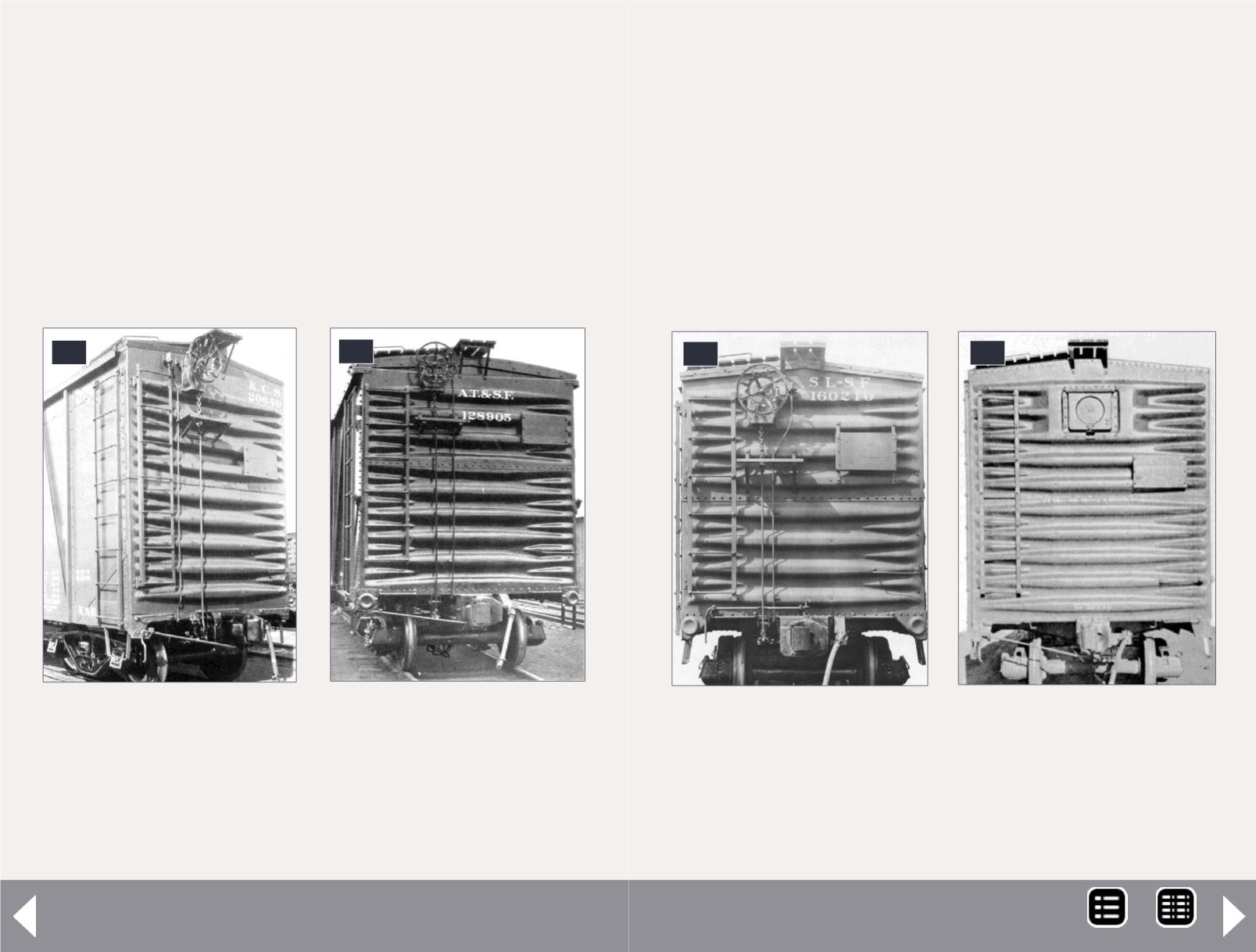
End doors, automobile and lumber doors
Lumber doors in the end of boxcars were not used for inserting
or withdrawing lumber [30]. Long pieces of lumber were loaded
through the regular side door, and poked out the lumber door as
far as needed for the opposite end to clear the jamb of the side
door. Once inside the car, the lumber was stacked in a conven-
tional manner. Unloading was accomplished in the same way.
Lumber that was too large to be jockeyed through the lumber
door was not usually loaded into box cars. Tamper-proof vents
27. Dreadnaught 4/5
ends cost $117 pair on
this 1936 rebuilt single-
sheathed boxcar.
27
28. Dreadnaught 3/4
end on car built by ACF
in 1930. End panels are
joined at the peak of
corrugations rather than
between the ribs.
28
Boxcar ends - 9
29. Basic 4/4 Dreadnaught
steel end with small
side darts between large
corrugations applied to
Frisco boxcar in late 1920s.
29
30. Two-panel 5/5
Dreadnaught end with
lumber door in upper
panel.
30
were also installed in car ends [5 and 12]. Boxcars designed to
transport automobiles frequently had full-width end doors to
ease handling their intended lading [32].
Dreadnaught ends
The Dreadnaught stamped steel car end was introduced in
1925 by Union Metal Products, a company under the control of
Standard Railway Equipment Company since the early 1920s.
The distinctive new end featured large horizontal ribs that
tapered toward the sides. For added rigidity, short darts from
MRH-Oct 2014


